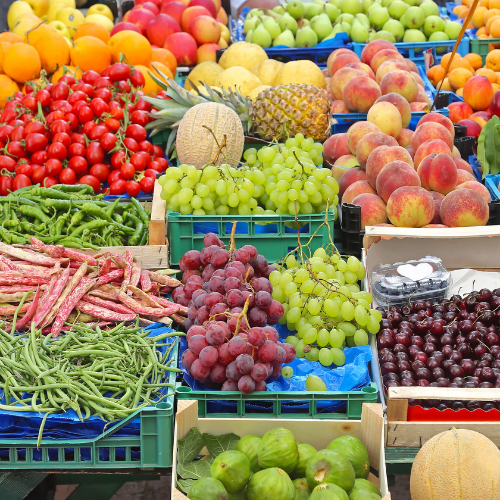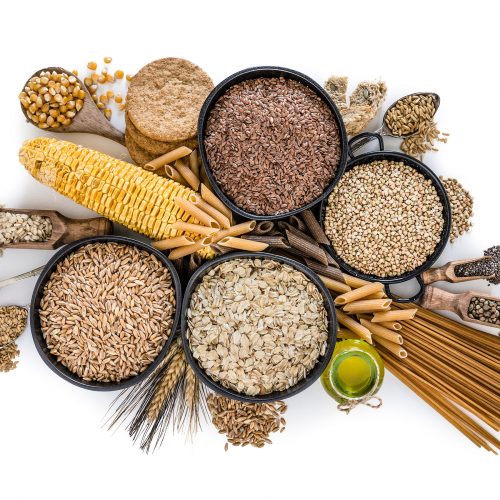Virtual Supermarket Tour [Weight Loss Edition]
Navigating a supermarket store can be stressful and complex with all the new products on the market.
Table of Contents
ToggleI’m here to guide you through your supermarket to make the healthiest choices possible if you are looking to lose weight.
Tips Before Entering the Supermarket
- Always shop with a list
- Plan out a weekly menu
- Begin by shopping the grocery store perimeter, where you can find all the produce.
- Enter the processed food isles last. This will allow you to fill most of your cart with fresh items with great vitamin and mineral content.
- Aim for foods with a short ingredient list (aim for five or less for most products).
- Choose fresh foods to avoid unnecessary additives.

Now let’s learn some key skills, such as understanding ingredients, shopping on a budget, how to read food labels, finding real whole grains, and understanding marketing in the food industry.
We will be taking a virtual supermarket tour to help you find healthy food choices.
Think of this as an interactive learning experience where you can check off what you have already done and what you need to do before and during your supermarket experience.
At the end of this activity, you will have new nutrition knowledge and know the best way to shop.
How to Read Food Labels
Reading food labels has become complex, and you can easily get tricked.
The easiest way to avoid getting tricked is to avoid reading the claims in the front and going directly to the back of the food product.
Research has shown that health claims added to packages on the front label have made shoppers believe the product is healthier than the same product without health claims (1).
Therefore, as a shopper, you must look at the ingredient list.
Understanding Ingredient List
Did you know that the ingredient list is organized from highest quantity to lowest? Therefore, when analyzing an ingredient list, those that you see first are the ones the manufacturers used in the greatest quantities.
Begin by scanning the top three or four ingredients since those are the ones you consume the most when eating that particular food product.
Avoid the product if those ingredients are sugar, hydrogenated oils, or refined grains. Instead, select items that have whole foods as the first ingredients on the list. Also, avoid food products with three or greater lines of ingredients.
What Percentages Should You be Looking for on a Food Label?

You can use % daily value to judge if a food product is high or low in a certain nutrient.
As a general rule:
- 5% DV or less of a nutrient per serving is considered low.
- 20% DV or more of a nutrient per serving is considered high.
To learn more about portion sizes, you can check out the myplate guidelines.
Virtual Supermarket Tour
Now that the basics are covered let’s go to the different sections of the supermarket.
Fruit and Vegetable Section

Eating vegetables and fruits is essential for a healthy diet and weight loss. Moreover, veggies and fruits can add flavor and color to your meals. Thus, if healthy eating is your goal, start by filling your shopping cart with a variety of them.
Fresh vegetables and fruits are always best, but for convenience and price, frozen vegetables can work great too.
Bread, Pasta, and Cereal Aisles
You want at least half the grains you consume to be whole-grain because they are better sources of fiber and other nutrients. Whole grains contain the bran, germ and endosperm.

Healthier whole grains:
- Barley
- Brown rice
- Buckwheat
- Bulgur
- Millet
- Oatmeal
- Popcorn
- Whole-wheat bread, pasta, or crackers
Regardless, check the product label or the nutrition fact panel to find the word whole. To be 100% positive, make sure whole grains are the first words on the list.
Dairy Aisle
Dairy products are a great source of calcium and other essential nutrients, but the section can be overwhelming! Especially with all the alternatives to dairy currently available.
Regardless of whether you choose cow’s products or alternatives, it is important to check the sugar content of the products. In terms of milk or alternatives, choose unsweetened or white milk most of the time.
Also, read the protein content of your choice; cow’s milk is high in protein while the rest are very low. Thus, be aware that you might have to add protein to your diet from other sources.
When choosing yogurt, look carefully at the sugar content and select one with less than 10 grams per serving. Another option is to buy plain yogurt and mix it with fruit and a teaspoon of sugar at home.
Last, cheese is all about portion sizes. Choose your favorite but be mindful of how much you eat.
Food to Add to Your Cart
- Veggies
- Fruits
- Meat
- Poultry
- Seafood
- Eggs
- Greek Yogurt
- Whole Grains
- Healthy fats
Foods to Minimize
- Ice Cream and other sweets
- Potato chips
- High sugar drinks
Summary
In today’s society shopping for groceries has become complicated but the tips in this virtual supermarket tour can make it easier to select healthy choices most of the time.
Key points to remember when grocery shopping:
- Make a list before going to the grocery store
- See what you have at home before going to the store
- Bulk shop when necessary and calculate properly when shopping for perishable items
- Read food products carefully when spending the extra money to buy “natural” products
“Virtual Supermarket Tour” was written by Registered Dietitian Solana Nicole Faerman. Reviewed/edited by Su-Nui Escobar, DCN, RDN, FAND.

Dr. Su-Nui Escobar, a Registered Dietitian/Nutritionist in Miami, FL, is dedicated to empowering women in perimenopause and menopause to live healthier, more satisfying lives.
With a doctorate in clinical nutrition from the University of North Florida, she has expertise in menopause and weight loss, including the unique challenges faced by those on weight loss medications.
Su-Nui’s passion for her field is evident in her previous role as the Academy of Nutrition and Dietetics spokesperson.


